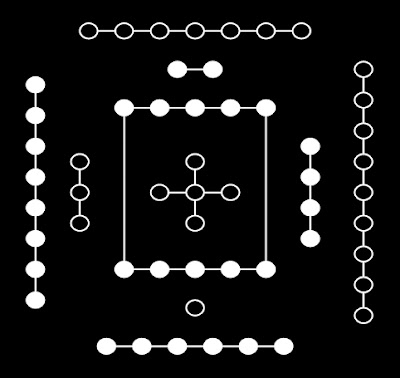The North Dipper star constellation has been the guiding axis to the Chinese civilization since time immemorial. Constituting the visible 7 stars with the other 2 invisible ones, the Dipper has been the universal clock for seasonal change, measurement of the lateral, sacred deity of the North, pantheon of deities for the Nine Emperor Gods, HeTu and so forth.
HeTu resembles the universal mother of the asterism (DouMu). The personification of DouMu can easily be found in the temple of the Nine Emperor Gods, a lady figurine with 9 pairs of hand with both hands significantly holding the Sun and the Moon. There is a reason of such personification to represents a concept that is way too abstract to the common Chinese at that time. It takes the form of Kun or mother that it gives birth to the asterism. In a nutshell it represents what came after the Big-bang.
HeTu is referred to sometimes, as the River Map. Legend foretold the arising of the Dragon Horse in the YangTze River with polka-dots emblem on its scaled belly. These dots are later known as Tu or map, as observed by FuZi, the pre-historical ancestor of the Chinese. That is where it got its name as HeTu. This mystical beast as half dragon half horse is a metaphoric description of the birth of time, where fire (related to the dragon horse) and water (related to the YangTze River) does not shoot each other. In other words, He or river is referring to the galaxy commonly known to the Chinese as YinHe or Silver Stream, another name for the Milky Way. It is told in such, so that the early Chinese are able to remember it in the absent of writing. HeTu is the map of the Milky Ways.







No comments:
Post a Comment